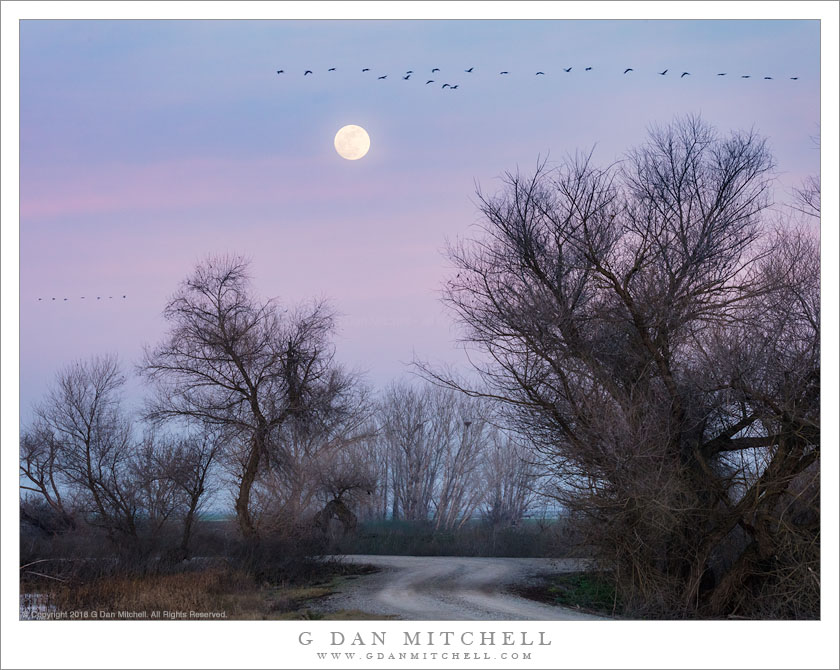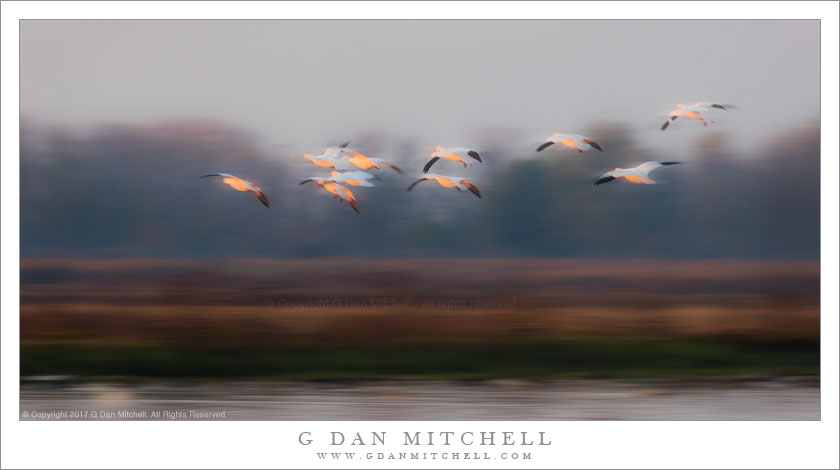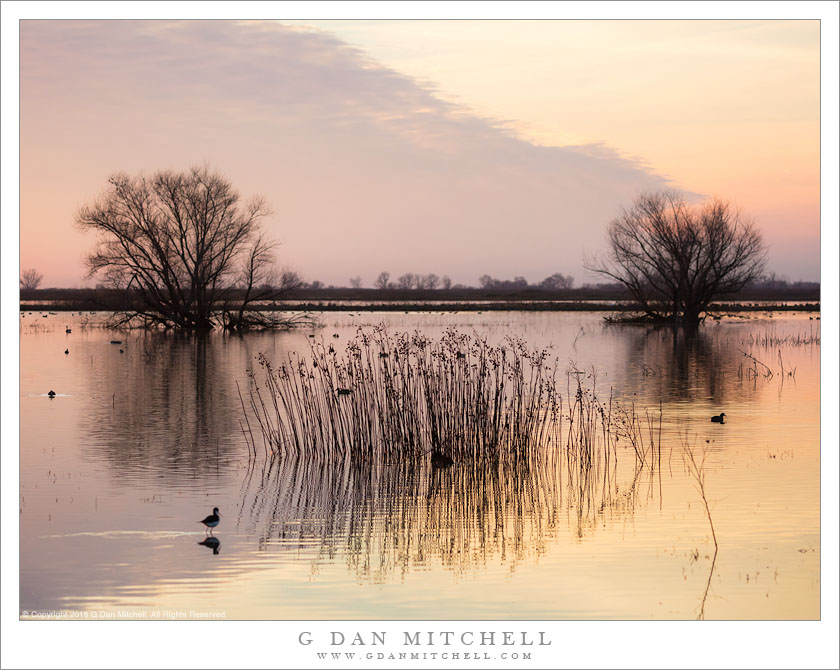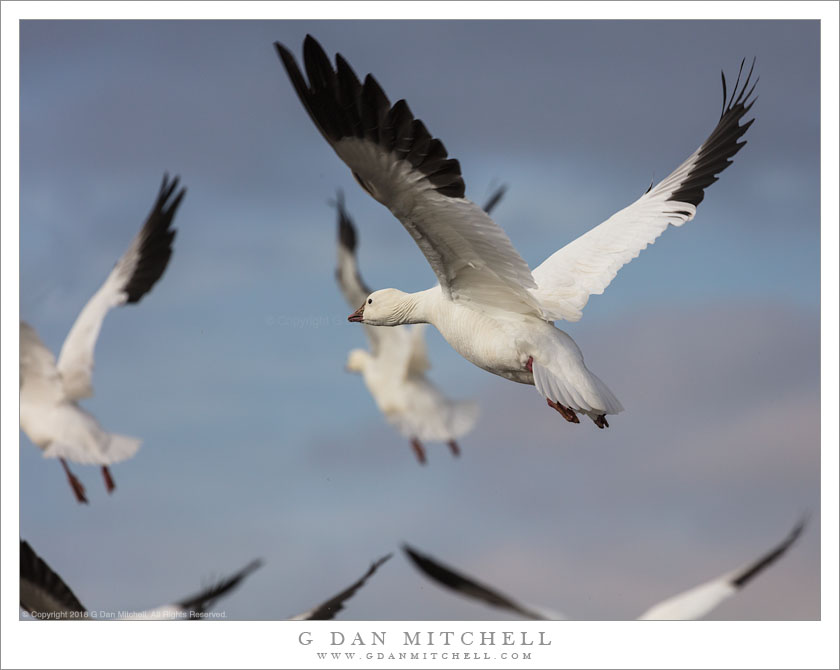
The Cranes Return. © Copyright 2018 G Dan Mitchell – all rights reserved.
Sandhill cranes fly over full moon in twilight and return to wetlands
I understand that the “Super Blue Blood Moon” or something similar occurred early this morning. I missed it. (Well, not quite. I did look out my window before sunrise, and I saw a bit of the eclipse over my neighbor’s house.) However, almost exactly 12 hours earlier I was in a position to look at and photograph that very same moon as it rose over the Sierra Nevada and climbed into the sky above California. It was a beautiful, quiet, peaceful moment at the end of a long day photographing birds.
I chose this particular day to visit the wetlands for a couple of reasons. First, I knew there would be ground fog in the morning and that fog often leaves behind a soft and hazy atmosphere. Second, I knew that the moon would rise from behind the Sierra about a half hour before actual sunset, putting it at an interesting elevation above the horizon at sunset and during the blue hour, that period when the moon seems bright but the ambient light is still sufficient to illuminate the landscape. I began watching for the rising moon at the appointed time, but it did not immediately appear, because it still had to clear the Sierra and because the atmosphere above the valley was so thick with haze. Perhaps twenty minutes later it began to emerge from the haze, and I quickly moved to a spot I had previously considered, where some trees break up the otherwise flat landscape here where a gravel road winds among them. I hoped that the cranes might appear — they often do during the moments shortly after sunset — and hoped even more that they might pass through the scene. Sometimes one does get lucky, and a long string of the birds flew just above the moon as the sky turned pink and deeper blue.
 G Dan Mitchell is a California photographer and visual opportunist. His book, “California’s Fall Color: A Photographer’s Guide to Autumn in the Sierra” is available from Heyday Books and Amazon.
G Dan Mitchell is a California photographer and visual opportunist. His book, “California’s Fall Color: A Photographer’s Guide to Autumn in the Sierra” is available from Heyday Books and Amazon.
Blog | About | Flickr | Twitter | Facebook | Google+ | LinkedIn | Email
All media © Copyright G Dan Mitchell and others as indicated. Any use requires advance permission from G Dan Mitchell.



